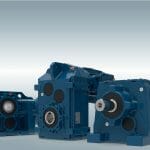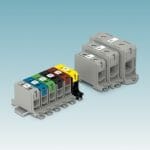By Jason Bean
What does it mean to have an OPC UA server combined with an IO-Link master with MultiLink™? And, more importantly,
what can you DO with it?MultiLink technology makes it possible to pass sensor information directly to an OPC client with the IO-Link master
from Pepperl+Fuchs. The built-in OPC UA server transfers the required supervisory data directly to the OPC UA clients while
simultaneously providing real-time sensor data to the PLC.
Determining why you need this data, what to do with it, and who needs what and when are probably the most important questions
to answer before you start collecting it.
To demonstrate how this information can be used, let’s answer the questions above from the perspective of different employees
within a manufacturing environment. To keep it simple, we’ll use two pieces of data from IO-Link sensors: operational status and
quantity of good product.
Production personnel are often incentivized by product throughput. For the cost of flat-screen TVs, large displays can be
easily installed across the shop floor to display a shift-by-shift breakdown of utilization and throughput. The IO-Link master
from Pepperl+Fuchs can easily collect this information from machine sensors and pass it directly to systems that display the
summarized data without impacting the PLC’s real-time control responsibilities. Shop floor workers can track production and
quality status in real time.
Maintenance is likely not concerned with throughput. Rather, they are more interested in whether a machine is running. Passing
information from the IO-Link master directly to a CMMS or EAM system facilitates alarms and notifications, so maintenance
personnel immediately know if a machine is not running. This allows for quicker responses to machine downtime events.
Engineering is most likely looking for ways to improve processes. They probably want both sets of information so they can track
and analyze the information from the historical databases, looking for trends so they can make improvements. With the
databases’ real-time access to the data, engineers are able to react to anomalies much faster.
Raw materials stores and purchasing probably want the throughput data in real time. This would allow them to use an
EAM to better gauge material usage and set alarms for ordering material to the line, which can help streamline the ordering
process.
Management most likely wants to analyze both sets of information to see how the organization as a whole is performing.
This will help them establish future goals and direction for the company.
These capabilities contrast with competitive IO-Link master solutions that only rely on the PLC for data collection. In this
approach, additional PLC programming is required for pushing more data up to the supervisory clients. Since many legacy PLC
systems are already running close to capacity, this approach can have a negative effect on cycle times and could require a PLC
hardware upgrade. The result is a much more costly, invasive, and time-consuming IO-Link implementation.
IO-Link masters with MultiLink and direct OPC UA connectivity from Pepperl+Fuchs are a more refined solution for simple and
seamless integration of IO-Link as part of an Industry 4.0 / IIoT implementation.








